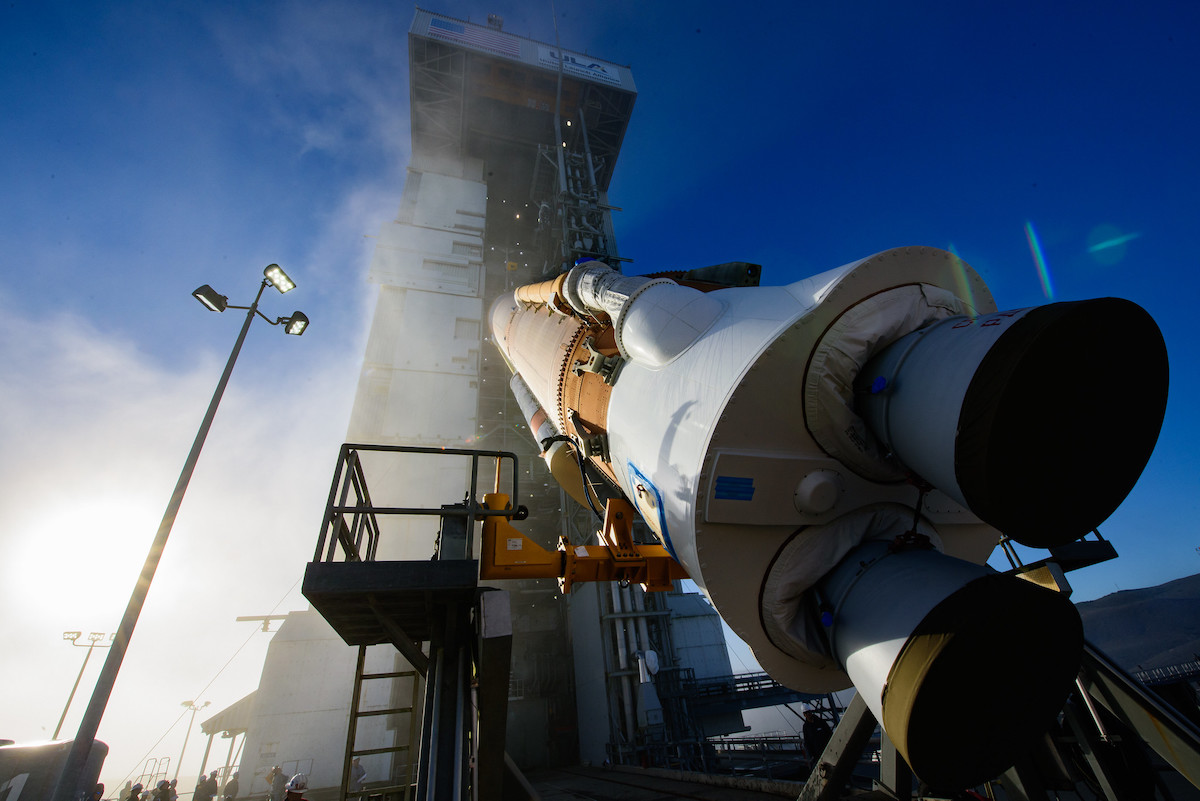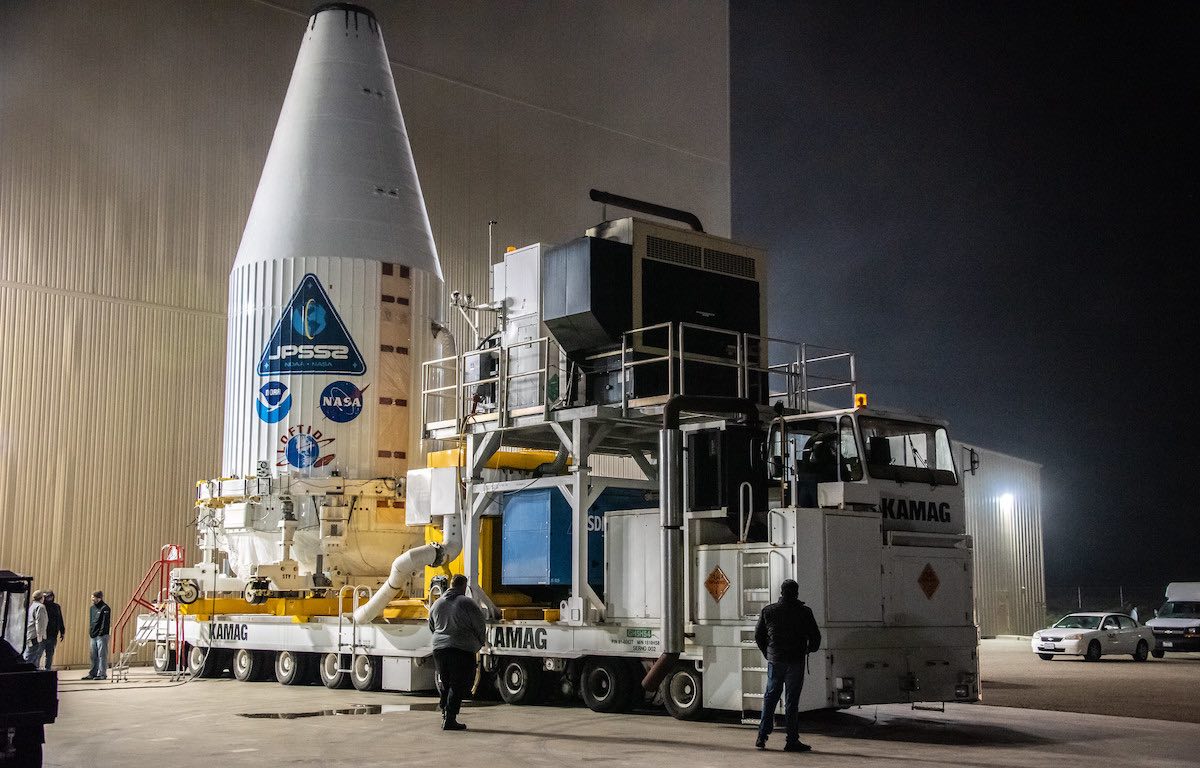
The final flight of an Atlas 5 rocket from California has been delayed from Tuesday until no earlier than Nov. 9 to replace a battery on the launcher’s Centaur upper stage, United Launch Alliance and NASA officials said.
The Atlas 5 rocket’s Centaur upper stage will place the JPSS 2 weather satellite into polar orbit for NOAA and NASA, then the rocket stage will perform a deorbit burn and deploy a joint ULA-NASA re-entry technology experiment named LOFTID, or the Low-Earth Orbit Flight Test of an Inflatable Decelerator.
The mission will have to wait until no earlier than Nov. 9 to blast off from Vandenberg Space Force Base in California. The launch time Nov. 9 is set for 1:25 a.m. PST (4:25 a.m. EST; 0925 GMT).
The rocket is fully stacked on its launch pad at Vandenberg to begin a mission that will close long chapters in the history of the Atlas rocket program. It will mark the final flight of an Atlas rocket from Vandenberg, and the last Atlas 5 rocket to fly with the vehicle’s classic 4-meter-diameter (13-foot) payload fairing.
There are 20 more Atlas 5 rocket flights on ULA’s schedule in the next few years, including the JPSS 2 mission. ULA is phasing out the Atlas 5 rocket, along with its other legacy rocket, the Delta 4. There are two Delta 4-Heavy rockets left on ULA’s launch manifest.
The Atlas 5 and Delta 4 rockets will be replaced by the next-generation Vulcan Centaur launcher, which ULA says will be cheaper to build and operate, and will exceed the capabilities of the company’s previous vehicles.

The JPSS 2 weather satellite is the second in NOAA’s newest generation of observatories gathering data on Earth’s atmosphere and oceans, mapping and monitoring wildfires and volcanoes, and measuring dust and smoke in the air. JPSS 2 will also track the health of the ozone layer.
Built by Northrop Grumman, the JPSS 2 spacecraft is the third satellite in NOAA’s Joint Polar Satellite System series of weather observatories. It follows the launch of the Suomi NPP and JPSS 1 weather satellites in 2011 and 2017, both on ULA’s now-retired Delta 2 rocket.
JPSS 2 will fly at an altitude of 512 miles (824 kilometers), allowing its four instruments to collect data over the same location on Earth twice per day, once in sunlight and once at nighttime, as the planet rotates underneath the satellite’s orbit.
The new satellite will be renamed NOAA 21 after it reaches orbit, continuing a line of U.S. government weather satellites dating back to 1960. Forecasters use data from polar-orbiting satellites to help predict weather three to seven days in advance, while NOAA’s GOES weather satellites in geostationary orbit provide real-time monitoring of severe weather and tropical cyclones.
The LOFTID secondary payload on the Atlas 5 rocket will test an inflatable heat shield design that could be used in the future to help land massive cargo on Mars. ULA partnered with NASA on the re-entry tech demo experiment because the company could use a similar heat shield system to help it recover rocket engines from the next-generation Vulcan rocket for refurbishment and reuse.
Email the author.
Follow Stephen Clark on Twitter: @StephenClark1.
